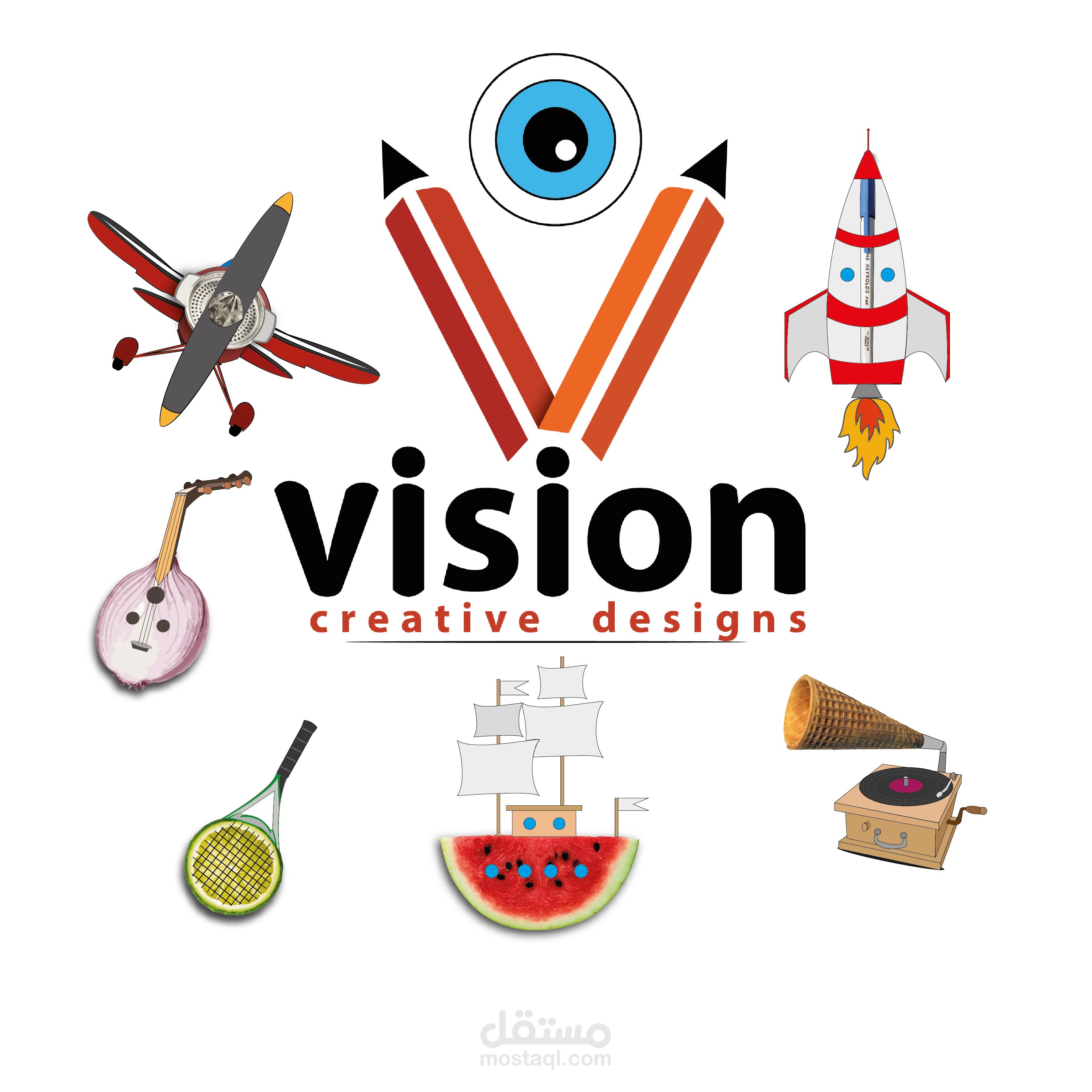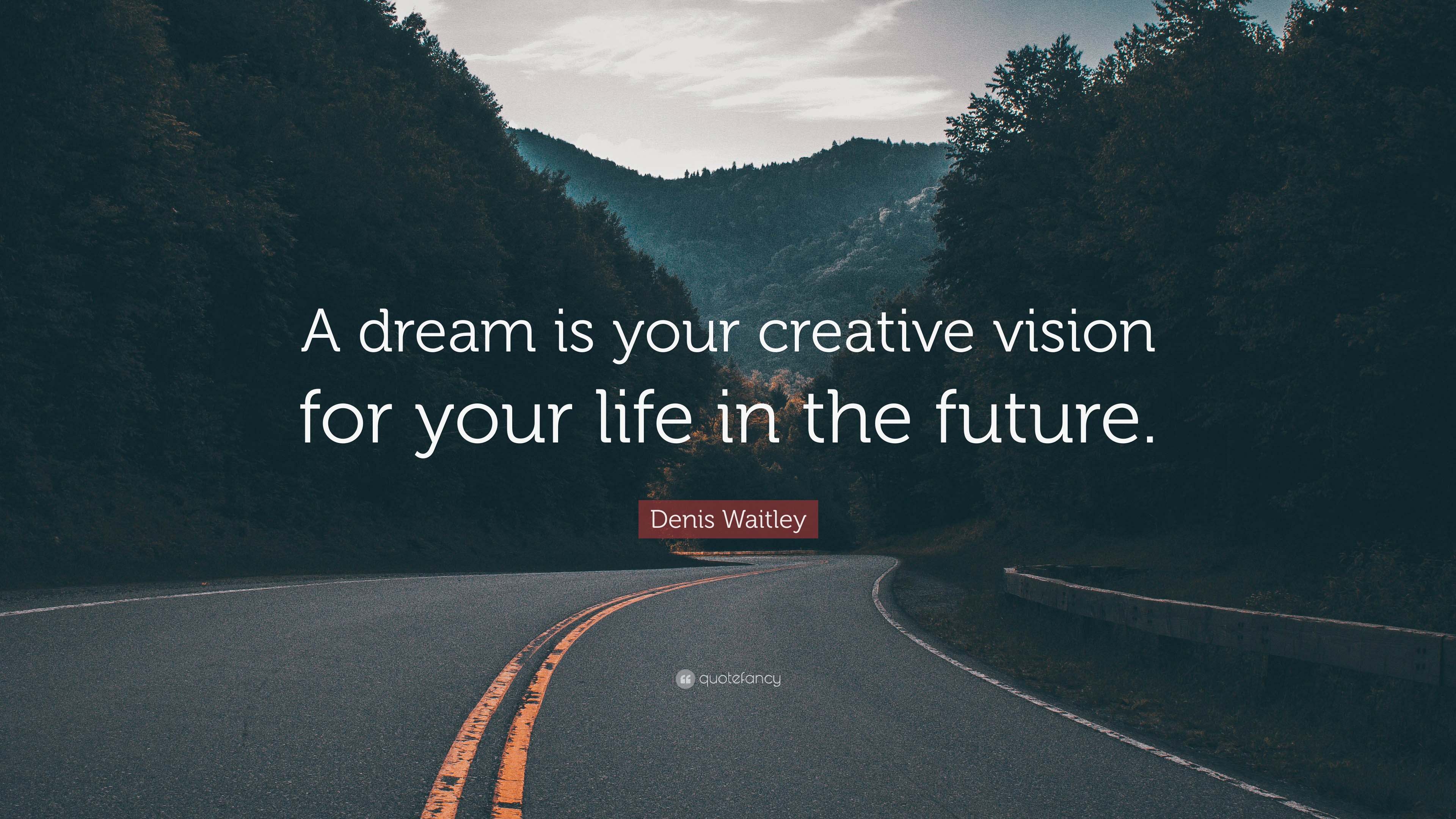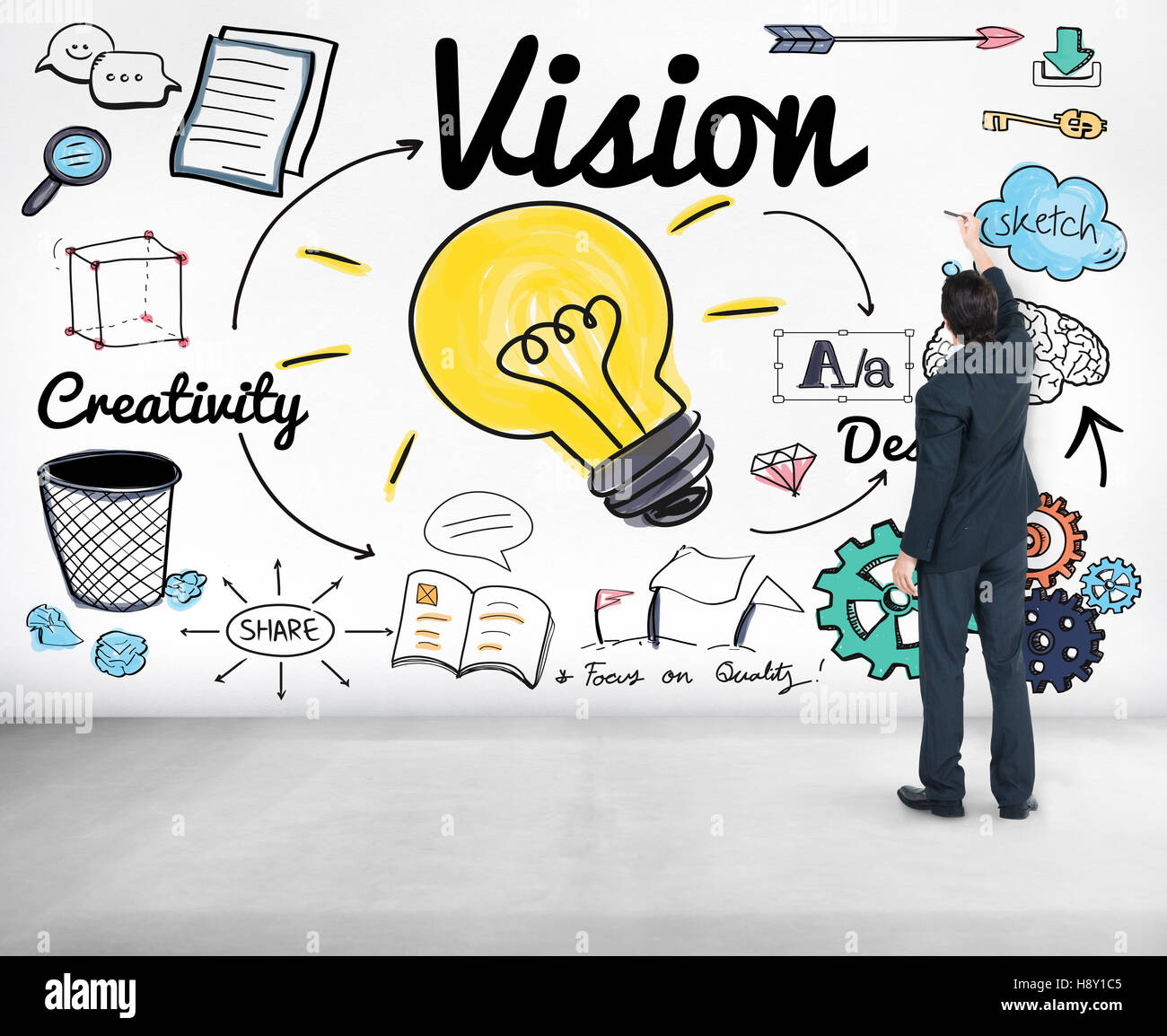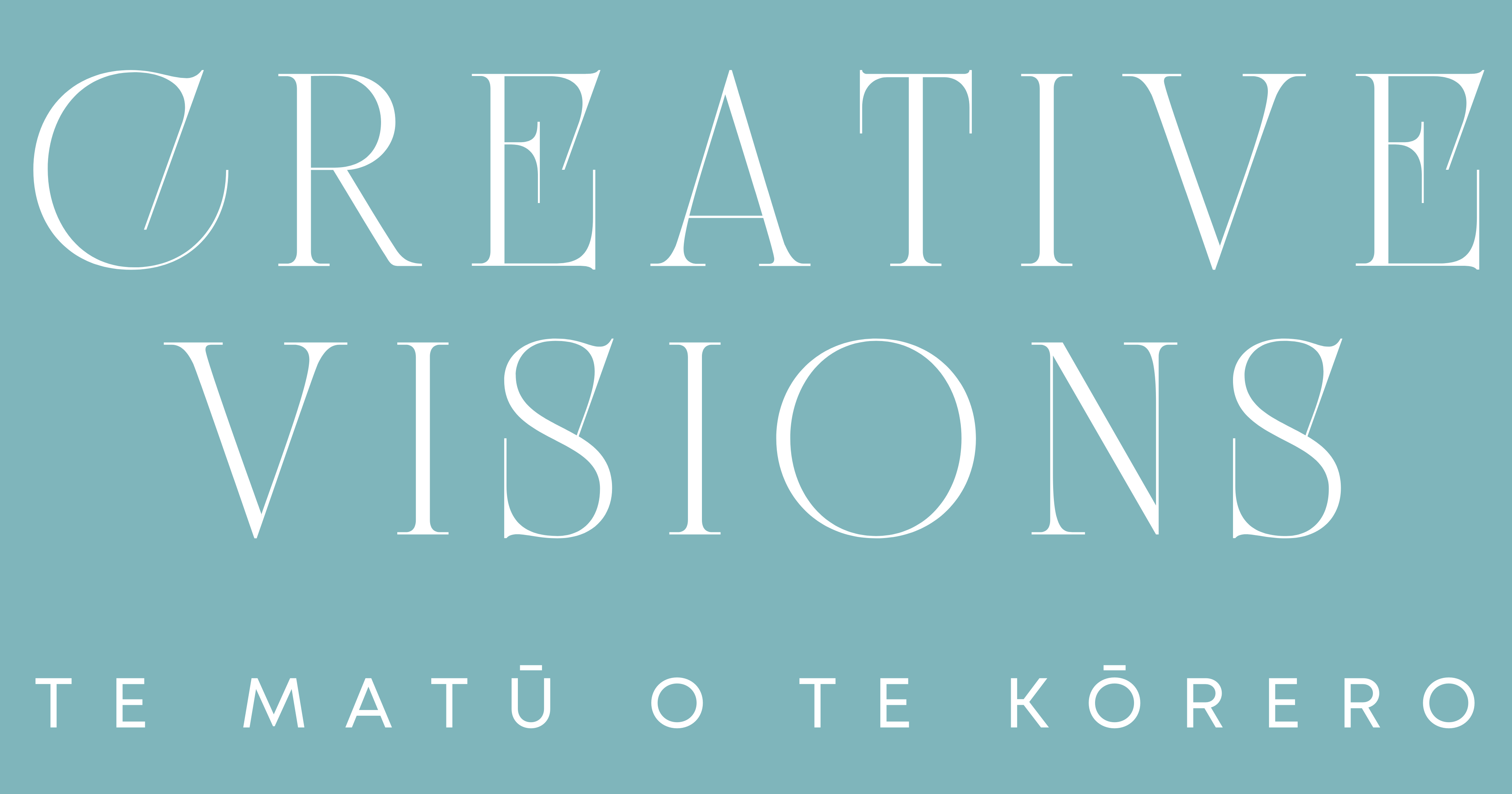Creative vision is the driving force behind every innovative idea, groundbreaking artwork, and transformative design. It is the ability to see beyond the ordinary and envision something new, something that has never existed before. In this article, we will explore the nature of creative vision, its sources of inspiration, and the process of developing and refining it.
We will also discuss the challenges and obstacles that can hinder creative vision, as well as strategies for overcoming them. Finally, we will examine the role of intuition and emotion in creative vision, and how it can be harnessed to produce truly remarkable work.
Definition and Nature of Creative Vision

Creative vision refers to the distinctive and innovative perspective that guides the creation of artistic or creative works. It encompasses the artist’s unique interpretation of the world, their personal style, and the overarching themes and ideas they seek to convey through their work.
The essential characteristics of creative vision include:
- Originality:The vision should be unique and distinctive, setting it apart from existing works.
- Clarity:The artist should have a clear understanding of their vision and be able to articulate it effectively.
- Purposefulness:The vision should serve a specific purpose, whether it’s to communicate a message, evoke an emotion, or explore a particular theme.
li> Adaptability:The vision should be flexible enough to allow for revisions and adjustments as the creative process progresses.
Sources of Creative Inspiration: Creative Vision
Creative inspiration can spark from various sources, both internal and external. These sources provide artists, writers, and innovators with the raw materials to generate and refine their creative ideas.
Personal Experiences and Observations:Life experiences, both positive and negative, can be a rich source of inspiration. By reflecting on personal journeys, emotions, and interactions, individuals can draw upon their own experiences to create authentic and relatable works.
Role of Imagination
Imagination plays a crucial role in creative inspiration. It allows individuals to explore possibilities beyond their immediate surroundings and experiences. Through imagination, they can envision new worlds, characters, and scenarios, expanding the boundaries of their creativity.
External Stimuli
The world around us is filled with potential sources of inspiration. Art, literature, music, and nature can all trigger creative ideas. By exposing themselves to diverse forms of expression, individuals can absorb new perspectives and find inspiration in the works of others.
Psychological and Emotional Factors
Creative inspiration is also influenced by psychological and emotional factors. Curiosity, passion, and a willingness to take risks can contribute to a creative mindset. Emotional experiences, such as joy, sadness, or anger, can also serve as powerful catalysts for creative expression.
Examples:
- Vincent van Gogh’s paintings were deeply influenced by his personal struggles with mental illness.
- J.R.R. Tolkien’s epic fantasy novel The Lord of the Ringswas inspired by his experiences in World War I.
- The music of Bob Dylan often reflects his social and political activism.
Development of Creative Vision
Developing a strong creative vision is a journey that involves cultivating and refining your unique perspective over time. It requires self-reflection, observation, feedback, and a commitment to staying true to your artistic values.
Stages of Developing Creative Vision
- Self-Exploration:Begin by understanding your passions, interests, and values. Write down your thoughts, dreams, and experiences to uncover your core motivations.
- Observation and Research:Immerse yourself in the world around you, observing different perspectives, cultures, and art forms. Take notes, sketch, and engage with the work of others to expand your creative horizons.
- Experimentation and Play:Allow yourself to experiment with different ideas and techniques without fear of failure. Embrace the unknown and push your boundaries to discover new possibilities.
- Refinement and Focus:As you experiment, gradually refine your vision by identifying what resonates most with you. Seek feedback from trusted sources and use it to sharpen your perspective.
- Articulation and Communication:Develop a clear and concise way to articulate your creative vision. This will help you communicate your ideas effectively and connect with your audience.
Cultivating Creative Vision
Observation and experience are essential for developing a rich creative vision. Engage in the following exercises to enhance your observational skills:
- Mindful Observation:Pay attention to your surroundings with all your senses. Notice details, patterns, and connections that others might miss.
- Sketching and Note-Taking:Capture your observations through sketching, writing, or photography. This will help you process and internalize your experiences.
- Travel and Immersion:Explore different cultures, environments, and perspectives to broaden your horizons and stimulate your creativity.
Communication and Expression of Creative Vision
Effectively conveying your creative vision is crucial for gaining support and collaboration. Here are some methods to communicate your vision:
Visual Aids, Creative vision
Visuals are powerful tools for showcasing your vision. Use images, sketches, or mood boards to illustrate your ideas and make them tangible.
Presentations
Well-structured presentations can help you articulate your vision clearly and persuasively. Use slides to present your ideas, data, and examples.
Storytelling
Stories can engage your audience and make your vision more relatable. Use narratives to explain the context, motivations, and impact of your vision.
Collaboration and Creative Vision

Collaboration plays a pivotal role in shaping creative vision, as it brings together diverse perspectives, skills, and experiences. It allows individuals to challenge assumptions, generate innovative ideas, and explore new possibilities.
Fostering a collaborative environment that supports innovation requires:
- Establishing clear goals and expectations.
- Creating a safe and inclusive space where individuals feel comfortable sharing ideas.
- Encouraging open communication and feedback.
- Recognizing and rewarding contributions.
Key Factors for Successful Collaboration
Successful collaboration in creative teams depends on:
- Trust and Respect:Team members must trust and respect each other’s abilities and perspectives.
- Communication:Effective communication is crucial for sharing ideas, providing feedback, and resolving conflicts.
- Shared Vision:A clear understanding of the project’s goals and vision helps align team members’ efforts.
- Diversity:Teams with diverse backgrounds and experiences bring a wider range of ideas and perspectives.
Communication and Trust in Collaboration
Communication and trust are essential for fostering a collaborative environment. Open and honest communication allows team members to share ideas, provide feedback, and resolve conflicts. Trust enables individuals to feel comfortable taking risks and sharing their perspectives.
Successful Creative Collaborations
Examples of successful creative collaborations include:
- The Beatles:The band’s collaborative songwriting process resulted in some of the most iconic songs in music history.
- Pixar Animation Studios:The studio’s collaborative culture has produced numerous award-winning animated films.
These collaborations succeeded due to factors such as shared vision, open communication, and a supportive work environment.
Challenges and Pitfalls of Collaboration
Collaboration in creative contexts can face challenges such as:
- Conflicts:Differences in perspectives and ideas can lead to conflicts.
- Ego:Individual egos can hinder collaboration and stifle creativity.
- Time constraints:Limited time can pressure team members and affect collaboration.
Overcoming these challenges requires effective communication, conflict resolution skills, and a commitment to shared goals.
Case Study
In a recent creative collaboration, I worked with a team to develop a new product design. The collaboration was challenging due to conflicting ideas and limited time. However, by establishing clear goals, fostering open communication, and respecting each other’s perspectives, we successfully developed an innovative product design that met the project’s requirements.
Examples of Creative Vision in Different Industries

Creative vision has been a driving force behind countless innovations and successes across a wide range of industries. By harnessing the power of imagination, visionaries have transformed businesses, revolutionized products, and shaped cultural landscapes.
In this section, we will explore real-world examples of how creative vision has manifested in different industries, analyzing the commonalities and differences in these cases.
Technology
In the tech industry, creative vision has led to groundbreaking products and services that have changed the way we live, work, and communicate. For instance, the iPhone was born out of Steve Jobs’ vision of a device that seamlessly integrated communication, computing, and entertainment.
Similarly, Elon Musk’s vision for electric vehicles has revolutionized the automotive industry, driving innovation in sustainable transportation.
Fashion
In the fashion industry, creative vision is essential for creating garments and accessories that capture the zeitgeist and push the boundaries of style. Coco Chanel’s “little black dress” is a testament to the power of simplicity and elegance, while Alexander McQueen’s avant-garde designs have challenged traditional notions of beauty and form.
Entertainment
The entertainment industry thrives on creative vision, whether it’s in film, music, or video games. Walt Disney’s vision for animated films has left an enduring legacy, inspiring generations of artists and audiences. Similarly, the creative vision behind the video game “Grand Theft Auto” has transformed the industry, pushing the boundaries of interactive storytelling and gameplay.
Healthcare
In healthcare, creative vision has led to life-saving innovations and improved patient outcomes. For example, the development of the MRI machine was driven by the vision of a non-invasive way to visualize the human body. Similarly, the creation of artificial limbs has been guided by the vision of restoring mobility and independence to amputees.
Commonalities and Differences
While creative vision manifests in different ways across industries, there are some commonalities that can be observed:
- Originality and Innovation:Creative vision often involves breaking away from established norms and introducing new ideas or approaches.
- Purpose and Impact:Creative vision is driven by a desire to make a meaningful contribution to the world, whether it’s through solving a problem, creating beauty, or inspiring others.
- Collaboration and Execution:Bringing creative visions to life often requires collaboration with others who share the vision and possess the necessary skills to execute it.
The differences in creative vision across industries primarily stem from the specific goals and constraints of each field. For instance, in healthcare, the focus is on solving medical problems and improving patient outcomes, while in fashion, the emphasis is on aesthetics and cultural relevance.
Challenges and Obstacles to Creative Vision

Fostering a creative vision can be an arduous journey, often hindered by various challenges and obstacles. Recognizing and addressing these barriers is crucial for nurturing and implementing innovative ideas.
Obstacles to creative vision can manifest in diverse forms, ranging from internal limitations to external constraints. Understanding the nature of these challenges empowers individuals to develop effective strategies for overcoming them.
Internal Challenges
Internal challenges stem from within the individual and can include:
- Self-doubt and Fear of Failure:Apprehension about the unknown and the potential for criticism can stifle creativity.
- Cognitive Biases:Preconceived notions and mental shortcuts can limit the exploration of novel ideas.
- Perfectionism:An unrelenting pursuit of flawlessness can hinder the flow of creative expression.
External Challenges
External challenges arise from the environment and can include:
- Organizational Culture:A rigid or risk-averse culture can suppress innovative thinking.
- Resource Constraints:Limited time, budget, or access to necessary resources can hinder the realization of creative visions.
- Market Pressures:External demands and competitive pressures can compromise the integrity of creative ideas.
Overcoming Challenges
Overcoming these challenges requires a multifaceted approach that includes:
- Embracing Failure:Viewing setbacks as opportunities for learning and growth can foster resilience and innovation.
- Challenging Assumptions:Questioning established norms and exploring alternative perspectives can expand creative possibilities.
- Seeking Support:Collaborating with others, seeking mentorship, or engaging in creative communities can provide encouragement and support.
– Describe tools and techniques that can help enhance creative vision, such as mind mapping, brainstorming, and prototyping.

Tools and techniques play a crucial role in enhancing creative vision by providing structured frameworks and methodologies to generate, explore, and refine ideas. Here are some widely used tools and techniques along with their benefits and applications:
Mind Mapping
Mind mapping is a visual tool that helps organize and connect ideas in a hierarchical structure. It starts with a central concept or idea and branches out into related s, s, or associations. Benefits include:
- Facilitates brainstorming and idea generation
- Enhances visual representation and understanding of complex concepts
- Improves memory and recall
Brainstorming
Brainstorming is a collaborative technique where individuals generate ideas freely without judgment or criticism. It encourages divergent thinking and helps explore a wide range of possibilities. Benefits include:
- Promotes group creativity and idea sharing
- Overcomes creative blocks and stimulates innovation
- Fosters a sense of ownership and involvement
Prototyping
Prototyping involves creating a tangible or digital representation of an idea to test its feasibility, functionality, and user experience. It helps refine concepts, identify potential issues, and gather feedback. Benefits include:
- Enables rapid iteration and improvement of ideas
- Provides a concrete basis for decision-making
- Reduces risks associated with full-scale implementation
| Tool/Technique | Benefits | Applications |
|---|---|---|
| Mind Mapping | – Visual organization and idea generation- Enhanced understanding and memory | – Brainstorming- Concept development- Project planning |
| Brainstorming | – Collaborative idea sharing- Divergent thinking and innovation | – Problem-solving- Creative strategy development- Team building |
| Prototyping | – Tangible representation for testing and feedback- Iterative improvement and decision-making | – Product design- Software development- User experience testing |
It’s important to note that the effectiveness of these tools and techniques varies depending on the individual, the nature of the creative project, and the context in which they are used. To develop a personalized creative toolkit, experiment with different tools and techniques to identify those that best align with your strengths and preferences.
Overcoming creative blocks can be challenging, but these tools and techniques can provide a structured approach to generating new ideas and breaking through mental barriers. For example, mind mapping can help visualize different perspectives and identify connections that may not be immediately apparent.
Brainstorming with others can stimulate divergent thinking and lead to unexpected solutions. Prototyping can provide a tangible representation of an idea, making it easier to identify areas for improvement.
To evaluate the effectiveness of these tools and techniques, consider the following factors:
- Number and quality of ideas generated
- Level of innovation and originality
- Clarity and organization of ideas
- Feedback from others
- Progress towards achieving creative goals
The Role of Intuition and Emotion in Creative Vision

Creative vision is not solely a product of rational thought and analysis; intuition and emotion play a vital role in its development and execution. This interplay between the conscious and subconscious mind, the rational and the intuitive, is essential for fostering original and groundbreaking ideas.
Balancing Rational Thinking and Creative Impulses
While logical reasoning and analytical thinking are crucial for shaping and refining creative concepts, they should not stifle the free flow of creative impulses. Intuition, often described as a “gut feeling” or “inner voice,” can provide valuable insights and lead to unexpected connections.
The key lies in finding a harmonious balance between these two forces, allowing rational thinking to guide the creative process while remaining open to the whispers of intuition.
Examples of Intuition and Emotion in Creative Works
Numerous renowned creatives across various fields have attributed their breakthroughs to the influence of intuition and emotion. For instance, Albert Einstein famously spoke of “cosmic religious feeling” guiding his scientific discoveries. In the realm of art, Pablo Picasso believed that “intuition is the mother of invention,” while the writer Virginia Woolf described the creative process as “a dance with the unconscious.”
Intuition, Emotion, and the Subconscious Mind
Intuition and emotion are closely intertwined with the subconscious mind, a vast reservoir of memories, experiences, and associations that lie beneath conscious awareness. During creative moments, the subconscious mind can surface unexpected connections and insights, leading to novel ideas and solutions.
Cultural and Societal Factors
Cultural and societal factors can significantly influence the development of creative intuition and emotion. Different cultures have varying perspectives on the role of intuition and emotion in creativity, shaping the ways in which individuals perceive and express their creative visions.
Techniques for Cultivating Intuition and Emotion
There are techniques that can help cultivate and harness intuition and emotion in the creative process:
- Mindfulness and meditation practices can enhance self-awareness and foster a connection with the subconscious mind.
- Dream journaling can provide access to the subconscious mind’s creative potential.
- Spending time in nature can stimulate the senses and evoke emotional responses that can spark creativity.
– Provide specific examples of ethical dilemmas that may arise in creative vision, such as using AI-generated content without proper attribution or creating content that promotes harmful stereotypes.
In the realm of creative vision, ethical dilemmas can arise when creators grapple with the responsible use of technology, intellectual property, and cultural sensitivity. Here are some specific examples to illustrate these ethical considerations:
Using AI-Generated Content Without Proper Attribution
With the advent of artificial intelligence (AI), content creation has become more accessible and efficient. However, it is essential to consider the ethical implications of using AI-generated content without proper attribution. For instance, using an AI-written poem in a creative work without acknowledging its AI origin could lead to plagiarism allegations.
Creating Content That Promotes Harmful Stereotypes
Creative expression should not perpetuate harmful stereotypes or perpetuate biases. For example, creating a marketing campaign that reinforces gender or racial stereotypes can contribute to societal inequalities. Responsible creators should strive to promote inclusivity and diversity in their work.
Measurement and Evaluation of Creative Vision

Measuring and evaluating the impact of creative vision on innovation and business outcomes is crucial for assessing its effectiveness and ROI.
To do this, it’s essential to establish key metrics and success indicators that align with the specific goals and objectives of the creative vision.
Key Metrics and Success Indicators
- Innovation metrics:Number of new products or services introduced, patents filed, or industry awards won.
- Business outcomes:Increase in revenue, market share, customer satisfaction, or employee engagement.
- Customer feedback:Surveys, reviews, or social media engagement that gauge customer perception and satisfaction with the creative vision.
- Internal feedback:Employee surveys or assessments that measure the level of alignment with the creative vision and its impact on team performance.
- Long-term impact:Tracking the sustainability and longevity of the creative vision’s impact over time.
Future Trends in Creative Vision

The future of creative vision is being shaped by emerging trends and technologies that are transforming the way we create, collaborate, and express ourselves. These advancements have the potential to redefine the creative landscape, opening up new possibilities for businesses and individuals alike.
Fostering a creative vision is a continuous process that involves seeking inspiration from diverse sources. One such source is the innovative world of creative pultrusions. By studying the techniques and aesthetics of these captivating works, you can broaden your creative horizons and infuse your vision with a fresh perspective, ultimately enhancing your ability to translate your imagination into tangible creations.
Artificial Intelligence and Machine Learning
Artificial intelligence (AI) and machine learning (ML) are rapidly becoming indispensable tools for creative professionals. These technologies can analyze vast amounts of data, identify patterns, and generate new ideas, enabling creators to explore uncharted territories and push the boundaries of their imagination.
Extended Reality
Extended reality (XR), which encompasses virtual reality (VR), augmented reality (AR), and mixed reality (MR), is revolutionizing the way we interact with the world around us. XR technologies allow creators to immerse themselves in virtual environments, design interactive experiences, and bring their visions to life in a tangible way.
Personalized Content Creation
The rise of personalized content creation is empowering individuals to create content that is tailored to their unique interests, preferences, and experiences. AI-powered platforms can analyze user data to generate personalized recommendations, enabling creators to connect with their audiences on a deeper level.
Blockchain and Non-Fungible Tokens
Blockchain technology and non-fungible tokens (NFTs) are transforming the way creators monetize and protect their work. NFTs allow creators to establish ownership and authenticity of their digital creations, opening up new revenue streams and fostering a more equitable creative economy.
Implications for Businesses and Individuals
These emerging trends have profound implications for businesses and individuals. Businesses can leverage AI and ML to streamline creative processes, personalize customer experiences, and create innovative products and services. Individuals can embrace XR technologies to enhance their creative expression, connect with global audiences, and establish themselves as thought leaders.
Design a Table to Illustrate the Different Elements of Creative Vision

To better understand the multifaceted nature of creative vision, we can categorize it into four key elements. These elements work together to foster innovation, expand perspectives, create meaningful experiences, and build resilience in the creative process.
The following table provides an overview of these elements, along with their definitions, examples, and significance:
Table: Elements of Creative Vision
| Element | Definition | Examples | Significance |
|---|---|---|---|
| Imagination | The ability to generate new ideas and concepts. | Brainstorming, mind mapping, freewriting | Fuels innovation and originality |
| Curiosity | The desire to explore and learn new things. | Researching, asking questions, experimenting | Expands knowledge and broadens perspectives |
| Empathy | The ability to understand and share the feelings of others. | Observing, listening, connecting | Fosters human-centered design and creates meaningful experiences |
| Resilience | The ability to bounce back from setbacks and challenges. | Overcoming obstacles, learning from mistakes | Builds confidence and perseverance |
Caption:This table summarizes the key elements of creative vision, highlighting their definitions, examples, and significance in the creative process.
General Inquiries
What is creative vision?
Creative vision is the ability to see beyond the ordinary and envision something new, something that has never existed before.
What are the sources of creative inspiration?
Creative inspiration can come from a variety of sources, including personal experiences, observations, imagination, art, literature, music, and nature.
How can I develop my creative vision?
There are many ways to develop your creative vision, including practicing observation, experimenting with different techniques, and seeking feedback from others.
What are the challenges to creative vision?
There are a number of challenges to creative vision, including creative blocks, self-doubt, and external pressures.
How can I overcome creative blocks?
There are a number of strategies for overcoming creative blocks, including taking breaks, seeking inspiration, and challenging negative thoughts.
